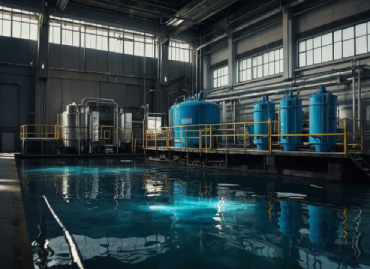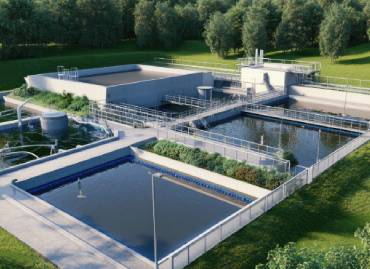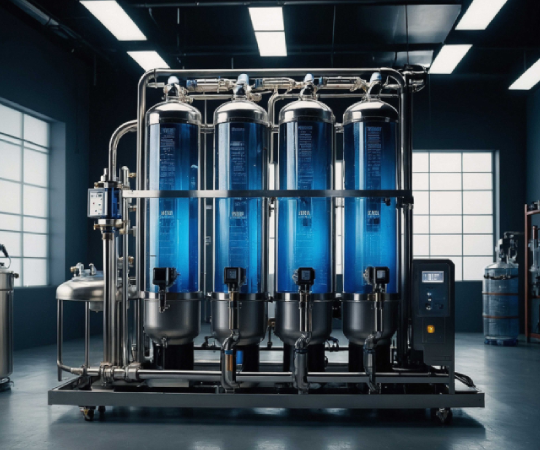- By Admin
- 02 Aug 2025
- WTP Plant
Innovative Water Treatment Systems for Office Buildings Enhance Sustainability and Operational Efficiency Across Sectors
Office buildings are fundamental to India's growing urban landscape. Cities like Mumbai, Pune, and Nagpur have seen the rise of massive commercial real estate projects driven by the flourishing service sector. These office spaces are home to thousands of employees who rely on a constant flow of water for various daily activities. As these buildings continue to grow, so does the pressure on municipal water systems. This challenge is especially pronounced in densely populated urban centres where water resources are limited. The need for sustainable water management solutions in office buildings has never been more pressing, as companies aim to not only improve operational efficiency but also meet their environmental sustainability goals.
"Water is not just a resource; it's the lifeblood of every commercial operation. Efficient water management is not only an investment in sustainability but also in the future of our cities, businesses, and the environment we share. Responsible water use ensures that we leave a cleaner, healthier world for future generations."
Understanding Water Use in Office Buildings
Water consumption in office buildings spans a wide range of activities, from basic sanitation needs to cooling and fire safety systems. A multi-story office complex can easily consume large volumes of water every day. Employees use water for restrooms, pantry services, and other routine functions, while HVAC systems depend on water-based cooling towers for temperature regulation. In addition, many office buildings feature green spaces such as gardens and rooftop terraces, which require regular irrigation. These areas further add to the demand for water.
Given these varying needs, office buildings are increasingly adopting systems that recycle water to reduce reliance on municipal sources and ease the strain on local water supplies. Recycled water is being used for non-potable purposes, such as irrigation, cooling, and even restroom flushing, helping office buildings achieve their sustainability goals while reducing costs. The trend toward more eco-conscious infrastructure has also led to the integration of water treatment technologies like Sewage Treatment Plants (STPs) and Water Treatment Plants (WTPs), designed to manage and repurpose water efficiently.


Key Sources of Wastewater in Office Buildings
In any office building, wastewater generation is an inevitable byproduct of daily operations. Major contributors to wastewater include restrooms, pantry areas, and cleaning activities. Restrooms typically generate blackwater, which is wastewater from toilets containing human waste and pathogens. Pantries, food courts, and cafeteria areas contribute to greywater, which includes soaps, oils, and detergents, as well as organic waste from food preparation.
In addition to these common sources, HVAC systems—particularly their cooling towers—also generate wastewater. As water cycles through these systems, it accumulates chemicals and dissolved solids, which, if not treated properly, can lead to environmental pollution. Cleaning and maintenance activities, such as floor washing, window cleaning, and basement upkeep, can also introduce water contaminated with chemicals and dirt. Without a proper treatment strategy, this wastewater can overload drainage systems or harm the local water table.
Treatment Technologies to Manage Wastewater in Office Buildings
The key to managing wastewater in office buildings is an efficient treatment process that can handle the varying types of wastewater generated daily. Sewage Treatment Plants (STPs) are the most commonly installed systems for treating blackwater and greywater. The process begins with screening and sedimentation, which helps remove large physical debris. This is followed by biological treatment methods, such as Moving Bed Biofilm Reactors (MBBR) or Sequential Batch Reactors (SBR), that break down organic pollutants.
Once treated biologically, the water undergoes disinfection using UV light or chlorine to remove pathogens. The resulting treated water is safe for reuse in areas such as toilet flushing, irrigation, and cooling systems. In buildings with large cafeterias or food courts, Effluent Treatment Plants (ETPs) and Grease Traps are also used to handle oily wastewater generated by food preparation processes. This multi-stage treatment ensures that the water leaving the building meets regulatory standards and can safely be reused or discharged.
Modern Technologies Supporting Water Recycling and Sustainability
As office buildings grow more complex, technology plays a vital role in making water treatment and recycling processes more efficient. Modern STPs equipped with Membrane Bioreactor (MBR) or MBBR technologies allow for high-quality water treatment in confined spaces. These systems offer superior performance and can be installed even in the tight spaces typical of urban office buildings. Additionally, automated systems now make it easier to monitor and manage water quality in real-time. These systems are integrated with IoT (Internet of Things) sensors, which send alerts if water quality falls below the required standards or if any operational issues arise.
Rainwater harvesting is another technique that office buildings are increasingly adopting. By capturing and treating rainwater, these systems reduce the dependency on municipal water supplies. In conjunction with advanced filtration systems, the harvested rainwater can be repurposed for irrigation or cooling tower use, further promoting sustainability. The use of cloud-based dashboards allows facility managers to remotely monitor and optimise the performance of these systems, ensuring they function smoothly and efficiently.
Tailored Water Treatment Solutions for Office Buildings
We offer specialised water and wastewater treatment solutions designed to meet the unique needs of office buildings. Whether you're managing a single office tower or a large commercial complex, our customised solutions are designed to provide efficient and cost-effective water management. From the initial assessment of water usage and wastewater discharge patterns to the installation of STPs, ETPs, WTPs, RO systems, and grease traps, we ensure that each building receives a solution tailored to its specific requirements.
Our water treatment systems are compact, modular, and equipped with automation features to minimise space usage and optimise performance. Post-installation, we offer comprehensive maintenance and training services to ensure the long-term success of the system. Our solutions help office buildings comply with environmental regulations, reduce water usage costs, and meet green building certifications such as LEED or IGBC.
Summary And Conclusion
Effective water and wastewater management in office buildings is key to achieving sustainability goals and reducing the environmental impact of daily operations. By integrating advanced water treatment technologies, such as STPs, ETPs, and modern filtration systems, buildings can reduce their dependency on municipal water supplies, minimise wastewater generation, and contribute to environmental conservation. The use of smart technologies for monitoring and controlling water quality, along with the adoption of rainwater harvesting systems, ensures that water resources are utilised efficiently. Customised treatment solutions can help commercial spaces achieve operational efficiency while also meeting sustainability certifications, making them both environmentally and economically viable.































































